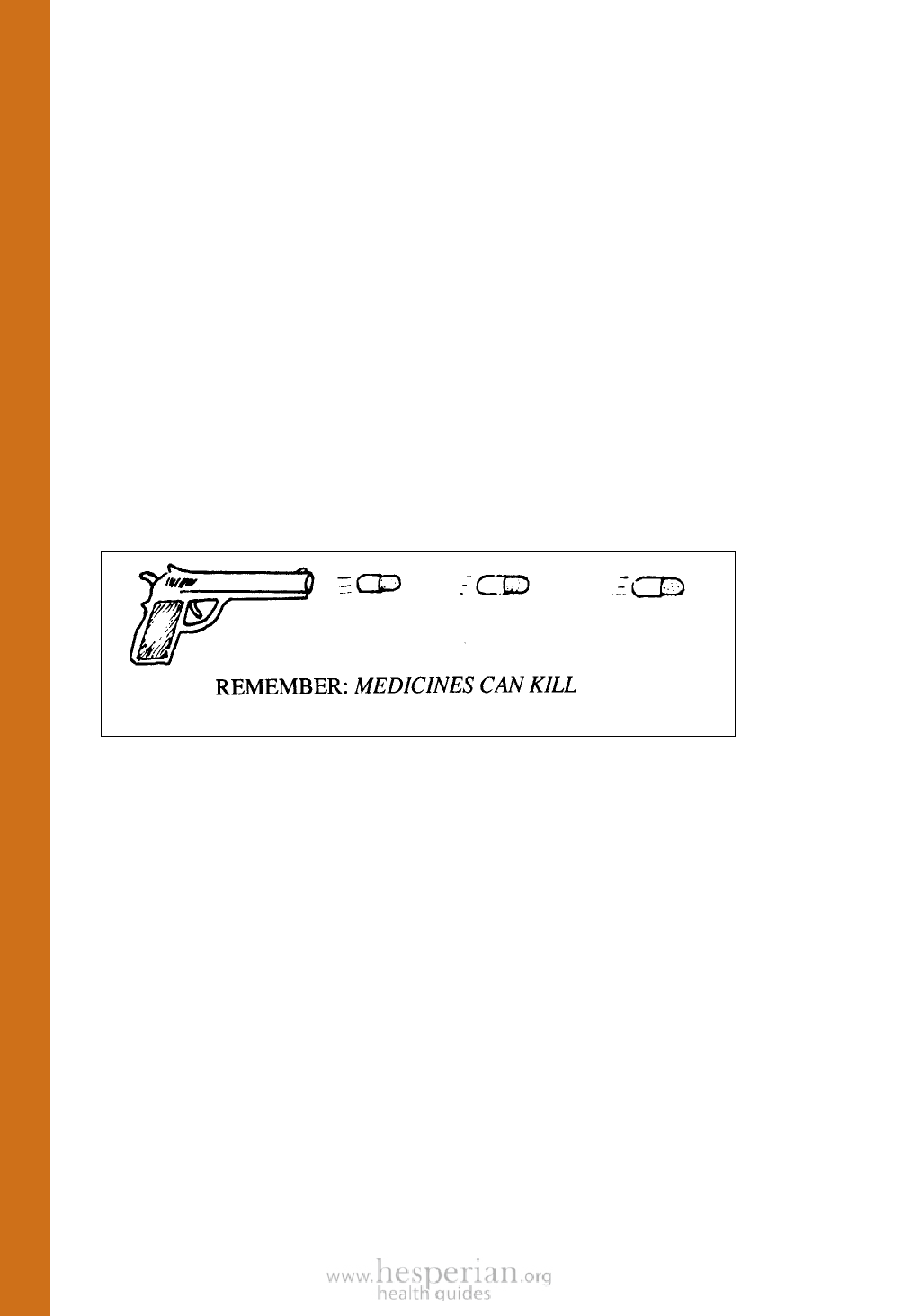
Where There Is No Doctor 2011
SENSIBLE AND LIMITED USE OF MEDICINES
One of the most difficult and important parts of preventive care is to educate
your people in the sensible and limited use of medicines. A few modern medicines
are very important and can save lives. But for most sicknesses no medicine is
needed. The body itself can usually fight off sickness with rest, good food, drinking
lots of liquid, and perhaps some simple home remedies.
People may come to you asking for medicine when they do not need any. You
may be tempted to give them some medicine just to please. But if you do, when
they get well, they will think that you and the medicine cured them. Really their
bodies cured themselves.
Instead of teaching people to depend on medicines they do not need, take
time to explain why they should not be used. Also tell people what they can do
themselves to get well.
This way you are helping people to rely on local resources (themselves), rather
than on an outside resource (medicine). Also, you are protecting their health, for
there is no medicine that does not have some risk in its use.
Three common health problems for which people too often request medicines
they do not need are (1) the common cold, (2) minor cough, and (3) diarrhea.
The common cold is best treated by resting, drinking lots of liquids, and at the
most taking aspirin. Penicillin, tetracycline, and other antibiotics do not help at all
(see p. 163).
For minor coughs, or even more severe coughs with thick mucus or phlegm,
drinking a lot of water will loosen mucus and ease the cough faster and better
than cough syrup. Breathing warm water vapor brings even greater relief
(see p. 168). Do not make people dependent on cough syrup or other medicines
they do not need.
For most diarrhea of children, medicines do not make them get well. Many
commonly used medicines (neomycin, streptomycin, kaolin-pectin, Lomotil,
chloramphenicol) may even be harmful. What is most important is that the child
get lots of liquids and enough food (see p. 155 to 156). The key to the child’s
recovery is the mother, not the medicine. If you can help mothers understand this
and learn what to do, many children’s lives can be saved.
w18